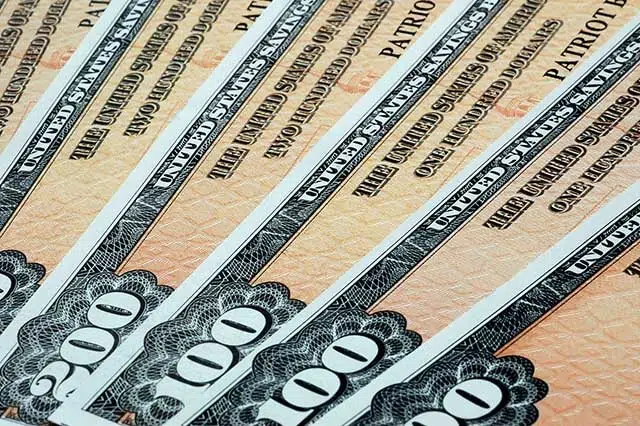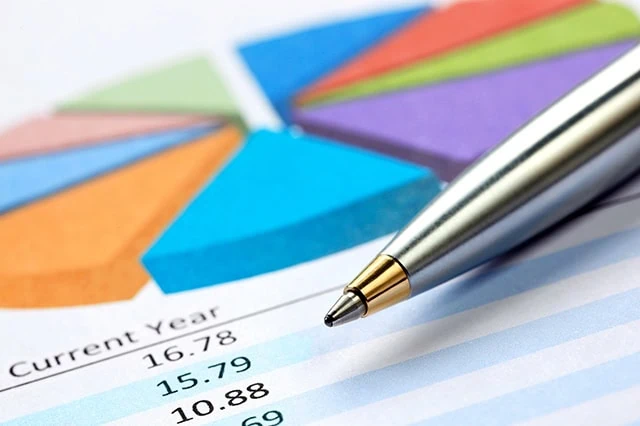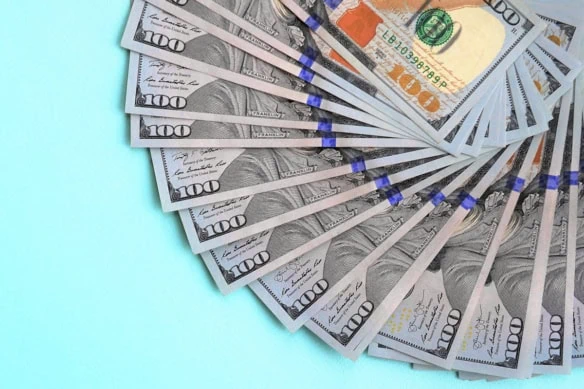The charm of a substantial cash stash is irrefutable, offering a reassuring cushion for unexpected expenses and a treasury of potential waiting to be unlocked.
However, letting your cash merely sit idle could be a financial misstep. Rather than letting it languish, you might want to think about putting that stash to work through short-term investments, at least until you need access to those funds in the future.
Short-term investments can help you earn a little extra from your cash, but that can also be quickly converted into cash should the need arise.
So, which kind of short-term investments should you park your idle money in? Today, I’ll go over several options that will keep your money both productive and accessible. Many of these options insure your money in some way, some boast tax advantages, and all of them have perks worth reviewing.
Depending on your investment objectives, you might need one or several short-term investments. Read on as I run through the options, and you’ll be prepared to pick the best ones for you.
Featured Financial Products
Table of Contents
What Are Cash Substitutes?

A cash substitute is a financial instrument you can utilize rather than storing money in your wallet. Many substitutes are low-risk financial vehicles. They’re also liquid, which means you can quickly and easily convert them into cash without losing much (if any) value.
Why Consider Short-Term Investments?

Typically, you’ll invest in a low-risk investments to earn more from the cash than you’d make by keeping it in a non-interest-bearing account. At the very least, it’s a way to grow your money, even if not substantially.
Because your money grows in short-term investments, you can use these to keep pace with inflation until you’re ready to deploy your cash. Remember: Inflation literally eats away at the value of a dollar over time. So technically, if your money isn’t growing, inflation is making sure that it’s shrinking.
Other ways for holding cash and earning a return are typically low-risk investments, but depending on your risk tolerance and time horizon, you may choose ones that are relatively riskier but have higher return potential.
1. Checking Account

A checking account is an excellent place to store money for everyday expenses. Checking accounts come with a debit card, which is a convenient way to pay for items or withdraw cash when you really need it.
You can write checks from a checking account (obviously), have paychecks directly deposited into it, and pay credit cards and other bills from it. It’s a flexible bank account, and within it, your money is as liquid as it could be.
However, while a checking account keeps money safe and accessible, with few exceptions—there are interest-bearing checking accounts—it really doesn’t help your money grow. In that case, your cash is just cash. And while you could consider interest-bearing checking accounts to be cash equivalents, they rarely offer anything above a nominal yield.
In other words, there are many more productive short-term investments you should consider.
Related: 8 Best Personal Capital Alternatives
2. High-Yield Savings Accounts

High-yield savings accounts (HYSAs) are an excellent short-term investment. These accounts offer much higher rates than traditional savings accounts but usually have similarly high liquidity as cash deposits.
One downside of an HYSA is that interest rates can change. Know that even if you get the best interest-rate deal possible initially, that rate might drop over time. For example, many different banks lowered their high-yield savings account interest rates numerous times throughout 2020. This happens because interest rates are tied to the Federal Reserve’s fed funds rate, which goes up and down over time depending on the Fed’s views of the economy. So it’s essential to keep an eye on a bank’s rates not only when you open the account, but over time as long as you have an account with the bank.
Related: 15 Best Income-Generating Assets [Invest in Cash Flow]
Also keep an eye on fees. Some banks will charge a monthly maintenance fee for high-yield savings accounts, or charge other fees for using certain bank account features. So understand all of the fees associated with your chosen account before signing up.
Ultimately, high-yield savings accounts are a great short-term investment that can earn you a higher rate of return than a traditional savings account without sacrificing liquidity. They’re also extremely low-risk—the money in your account can’t decline in value, and each depositor is typically given up to $250,000 in Federal Deposit Insurance Corporation (FDIC) insurance or National Credit Union Administration (NCUA) insurance.
Like Young and the Invested’s Content? Be sure to follow us.
Featured Financial Products
3. Certificates of Deposit (CDs)

Certificates of deposit (CDs) are offered by most banks and credit unions and are easy to open and understand. CDs are almost risk-free and insured in the United States for up to $250,000. They are another savings instrument like savings accounts but come with longer-term commitments, varying from three months to five years.
CDs work by lending money to a bank for a set amount of time (the “term length”), with longer term lengths typically involving higher interest rates. Much like any interest-bearing asset, the longer the term length or commitment, the higher interest rate and return you can expect to earn in exchange for losing access to your money for longer.
During the term length, you gain interest on the principal at a rate usually higher than that of a high-yield savings account. If you take money out during the term length, you’ll generally have to pay a penalty, so it isn’t wise to invest money you anticipate needing in the near future.
Related: The 8 Best Dividend ETFs [Get Income + Diversify]
CDs are a great example of the give-and-take involved with choosing a cash equivalent. CDs are decidedly less liquid than a savings account—your money will be wrapped up for a set amount of time, though in emergencies, you can still access it by paying an early withdrawal penalty—but they offer higher rates than basic and even high-yield savings accounts.
If you’re looking for some competitive APYs on a certificate of deposit, consider checking out CIT Bank’s CDs.
Do you want to get serious about saving and planning for retirement? Sign up for Retire With Riley, Young and the Invested’s free retirement planning newsletter.
4. Money Market Accounts

Money market accounts are a category of savings accounts that offer higher interest rates than traditional savings accounts, but lower rates than high-yield savings accounts. Like with savings accounts, the interest rates are variable, not fixed. They’re also considered low-risk investments, they also enjoy FDIC or NCUA insurance, and they’re considered a popular place to keep an emergency fund.
The main pro of the money market account is that it offers a higher interest rate than your average savings account. Past that, however, they have a few drawbacks.
Related: The 9 Best Dividend Stocks for Beginners
For one, while they are liquid, they tend to be less liquid than savings accounts. Users can conduct a limited number of transactions per month, which usually includes check-writing privileges and/or a debit card. The Federal Reserve used to cap withdrawals at six per month. That requirement—once mandated by Regulation D—is now gone, and many banks allow more transactions, but some banks and credit unions have kept the six-withdrawal limit.
Related: Is It Better to Pay Off Your Credit Card or Keep a Balance?
Some money market accounts also charge monthly maintenance fees, and some also have minimum balance requirements. Lastly, while money market accounts typically earn higher interest rates than savings accounts, many other short-term investments earn better rates.
5. Money Market Funds

Not to be confused with money market accounts, money market funds (or money market mutual funds) are open-ended mutual funds that invest in debt securities with short maturities. This is considered a low-risk investment with very low volatility.
Investors receive steady interest income from money market mutual funds. Depending on the types of securities in the fund, the income generated is either taxable or tax-exempt.
There are several different types of money market funds, including:
— Treasury (only holds Treasury securities)
— Government (holds Treasury and other agency securities)
— Prime (holds many types of debt security)
— Municipal (holds municipal debt securities)
Money market funds are more liquid than CDs and offer comparable (and sometimes higher) yields. However, money market funds—and any short-term investment you’d own inside of an investment account—is going to be less liquid compared to, say, a checking or savings account. That’s just because of the additional steps and waiting time involved. You have to sell the asset, wait for the transaction to settle, either wait for a check from the broker or have the money transferred to a related bank account, then withdraw the money. (And depending on the type of investment account, you might also have to worry about tax implications, withdrawal penalties, and other limitations.)
Related: Do Installment Loans Build Credit?
Because money-market funds invest in extremely short-term, extremely high-quality debt, they’re considered one of the safest investments on the planet. However, a few have failed on rare occasions (for instance, during the Great Recession). So any money up to the FDIC/NCUA limit is technically safer in a CD or other bank product. But money market funds remain an extremely safe place to earn some extra money on your money.
Many brokerage accounts will actually sweep idle cash into their money market funds so you’re still earning interest even if you don’t have all of your funds invested.
6. Treasury Bills

Much like any other individual or business, the U.S. government can borrow money to make ends meet. It does so through the U.S. Treasury, which issues three primary kinds of debt:
— Treasury bonds (T-bonds): Mature in 20 to 30 years
— Treasury notes (T-notes): Mature in two to 10 years
— Treasury bills (T-bills): Mature in 4 to 52 weeks
Treasury bills—which can have maturities of four, eight, 13, 17, 26, and 52 weeks—are sold in increments of $100 (also the minimum purchase amount) up to a value of $10 million. You can typically purchase these through the U.S. government’s Treasury Direct or through a bank or broker.
Related: 12 Best Investment Opportunities for Accredited Investors
When you buy a T-bill, you lend money to the U.S. government for a specified period of time. The price for a T-bill will vary, but usually will be below the bond’s face value, or “par value.” (For instance, a $1,000 T-bill might cost $975 to purchase.) When the T-bill matures, you receive the full par value of the bond—so the return on your investment is the difference between the discounted price you paid at auction and the par value of the T-bill.
Treasuries are one of the most secure investments in the world due to their virtually guaranteed repayment. The federal government hasn’t defaulted on a debt payment since moving away from the gold standard in 1971.
When you receive the repayment of your T-bills’ face value, the income generated is exempt from state and local taxes. This can make them a good choice for investors looking for reliable, tax-advantaged income.
T-bills are very liquid securities that generate a modest amount of income. Many people hold them in exchange-traded funds (ETFs) and mutual funds, though some financial institutions and fintech firms allow you to own them individually, or invest in them through Treasury products.
Like Young and the Invested’s Content? Be sure to follow us.
Featured Financial Products
7. Treasury Notes

As mentioned above, Treasury notes are considered between short- and medium-term in nature, taking more time to mature (two to 10 years) than T-bills. Like with T-bills, T-notes are backed by the full faith and credit of the U.S. government, making them very low-risk investments. They’re sold at terms of two, three, five, seven, and 10 years.
Treasury notes pay a fixed interest rate every six months until the note matures. Federal taxes on interest earned are due each year, though the income is exempt from state and local taxes.
Related: Federal Tax Brackets and Rates [2024 + 2025]
With T-notes and other bonds, you can either hold on until it matures, at which point your full principal will be repaid. But you can also sell the bond—which you’ll hopefully do for a gain, but you might have to sell at a loss. Either way, if you want to know how bonds move higher and lower, take a breath and brace yourself—it’s a mouthful:
Bonds’ performance is directly tied to market interest rates. Specifically, bonds have an “inverse relationship” with interest rates—when market interest rates rise, bond prices fall, and when rates fall, bond prices rise. Thus, all bonds have some level of “interest-rate risk,” and T-notes have more of it than T-bills. Why? If market interest rates rise, new bonds with higher rates will make comparable older bonds with lower rates look less enticing to investors. As a result, the market will price those older bonds lower. This effect is amplified on longer-dated bonds because they have more interest payments remaining.
Put differently: If a bond you hold matures in four weeks, you probably won’t sell it early just because a new short-term bond with higher rates is available. But if your bond matures in, say, five years, you might sell your current bond to buy a bond with higher income potential.
The flip side of this risk? T-notes usually offer higher rates than T-bills. They’re also similarly liquid—yes, they take longer to mature, but you can usually buy and sell them with ease.
Related: Capital Gains Tax: What Is It, Rates, Home Sales + More
8. Short-Term Corporate Bonds

Just like the U.S. government issues bonds to help fund its operations, corporations frequently issue bonds to fund research, development, expansion, you name it.
Generally speaking, corporate bonds have lower credit quality than U.S. Treasury bonds. Credit quality is generally determined by how likely an entity is to pay back its debts—and the credit-ratings agencies believe that just about any U.S. corporation has at least a little (if not a lot) more risk of going under than the U.S. government. Probably a fair bet.
That lower quality does mean more risk—but it also usually means better compensation in the form of higher yields.
Also, “lower quality than Treasuries” doesn’t always mean “low quality.” Many corporate bonds are considered investment-grade, which means the bond rating companies generally deem them likely to be repaid. If you’re willing to accept more risk, you can invest in junk bonds, which are less likely to be repaid but also offer even sweeter yields as a result.
Like with U.S. Treasury bonds, short-term corporate bonds are fairly liquid—they don’t take long to expire, and if you need cash before that, you can typically sell without trouble. And like with T-notes and T-bills, many investors buy these through ETFs and mutual funds rather than individually.
Related: How to Get Free Stocks for Signing Up: 9 Apps w/Free Shares
9. Treasury Inflation-Protected Securities (TIPS)

Treasury Inflation-Protected Securities, aka TIPS, are designed to protect your money from inflation.
Investors hold TIPS for a fixed period of 5, 10, or 30 years. During that time, TIPS’ principal might head higher or lower. However, when a TIPS bond matures, if the principal is higher than the original payment, you get the principal amount back. If the principal is equal or lower to the original payment, you get the original payment amount back. Also, every six months, TIPS pay a fixed rate of interest until maturity. The interest payment amounts vary as the principal adjusts. Like with other bonds, investors can hold TIPS until maturity or sell them earlier. Also like with other bonds, investors frequently choose to hold TIPS via bond funds.
The argument for TIPS as a short-term investment is they’re fairly liquid and protect your investment against inflation. The downside is that yields are often low to even negative—so while it will protect your money from inflation, and while they’re low on risk, they might not make you much money, especially during periods of low inflation or deflation.
Related: The 7 Best Closed-End Funds (CEFs)
10. Short-Term Bond Funds

Like I’ve been saying for the past few sections, you can buy T-bills, T-notes, TIPS, and corporate bonds through short-term bond funds, be they mutual funds, ETFs, or closed-end funds (CEFs).
When you purchase shares of a bond fund, your money is pooled with other investors’ money, which is collectively invested in debt securities. Which securities the fund invests in is determined by either a human manager(s) or a rules-based index, but either way, there are typically at least some guidelines governing what the fund can and can’t purchase.
The fund distributes income regularly to investors, who also enjoy any price gains (or absorb any price losses) from the shares over time. In exchange, you pay at least one fee—annual expenses that are automatically taken out of the fund’s performance. (Mutual funds also might charge other fees, such as sales loads that are taken out of your initial investment.)
Related: The 7 Best Mutual Funds for Beginners
Short-term bond funds are generally considered low-risk investments not just because of what they invest in, but how much they invest in. If you only invest in a few individual bonds, the failure of a single bond could have a significant pull on your nest egg. But bond funds invest in hundreds if not thousands of debt securities, so the failure of one or two won’t affect the portfolio much. Also, risk is relative—a junk bond fund might be less risky than owning one or two junk bonds, but it’s still much riskier than owning investment-grade corporate bonds or Treasuries.
These funds are also great short-term investments because it’s fairly easy to buy and sell shares without affecting their price.
Related: 11 Best Free Investing Apps [Invest for Free]
Do you want to get serious about saving and planning for retirement? Sign up for Retire With Riley, Young and the Invested’s free retirement planning newsletter.
Other Investments: Short-Term Alternative Investments

Now, I’ll dig into a few off-the-beaten-path short-term investments. You won’t find these at your local bank or in your brokerage account, but they might be worth considering depending on your financial situation.
Real Estate-Linked Short-Term Financing

Alternative investments is a catch-all term for any investment that doesn’t fall into the categories of stocks, bonds, or cash. It covers a wide variety of investments, from real estate to fine art to sneakers, and it has become increasingly popular as fintech services have opened up once-restrictive markets to the individual retail investor.
Often, because of the less transparent nature of these investments, they’re limited toward investors with more financial resources and understanding—namely, accredited investors. These investors meet certain financial requirements (or qualify with recognized credentials) and can gain access to investments that can offer compelling risk-reward characteristics.
Next, I’ll highlight one such option from EquityMultiple, a crowdfunding real estate platform focused largely on commercial real estate investments.
EquityMultiple’s Alpine Notes (Accredited investors only)

Are you an accredited investor looking for a short-term investment with attractive returns? Meet EquityMultiple’s Alpine Note series.
Alpine Notes are a savings alternative with competitive rates of return on three-, six-, and nine-month notes, providing another means of conservative diversification and short-term yield. Compared to the commercial real estate crowdfunding platform’s other investment offerings, these notes are extremely short-term in nature, and thus an optimal choice for EquityMultiple users who want better liquidity.
While the notes aren’t as liquid as a savings account, they do offer maturity dates that tend to be shorter than your typical CD—and significantly higher rates of return. While this product isn’t FDIC-insured, EquityMultiple does add a degree of protection by assuming the first-loss position in case of default. That means EquityMultiple will purchase a small portion of the aggregate notes issued in a series and will only receive payments after all other investors receive their total principal and interest. Such an arrangement puts their capital at risk, adding skin in the game and aligning their interests with yours.
In case you’re wondering what EquityMultiple does with your funds that justifies paying you such a healthy return, the platform takes the capital you provide and uses it as a line of credit to sponsors who bring real estate investments to EquityMultiple’s core investment platform. The credit allows sponsors to receive surety of funding on initial closing, thus attracting more high-quality investments from high-quality sponsors.
With EquityMultiple’s Alpine Note, you’ll need to be both an accredited investor and have at least $5,000 to participate. If you’re interested in accessing higher yields than traditional CDs or money market accounts, the Alpine Note series is one of the simplest and most efficient ways to take advantage of EquityMultiple’s real estate investment opportunities without tying up your money long-term.
Various Income-Focused Alternative Investments

Alternatives don’t just mean real estate, however. It covers a wide variety of investments, from real estate to fine art to sneakers, and it has become increasingly popular as fintech services have opened up once-restrictive markets to the individual retail investor.
Yieldstreet

Yieldstreet is one such platform leading the charge to provide access to income generating assets in a number of asset classes.
Yieldstreet is an alternative investment platform that provides you with income-generating opportunities. These investment options come backed by collateral, typically have low stock market correlation, and span various asset classes. Such asset classes include:
— Art finance
— Real estate
— Commercial finance
— Legal finance
— And more
Yieldstreet, which has been in business since 2015, has returned more than $2.2 billion to its investors since its founding.
Yieldstreet currently boasts a net annualized return (measured by internal rate of return, or IRR) of 9.6% across all its investments since inception. But that’s an average: Historically, annual returns range anywhere from 3% to 18%, depending on the goal-based strategy. Yieldstreet offers predefined payment schedules (e.g., monthly or quarterly payments), and they may pay principal and interest upon the occurrence of certain events, such as settlement within a legal finance investment.
The durations of investment opportunities range from three months to seven years. Investment minimums start as low as $10,000, but can go well into mid-five digits.
Yieldstreet technically is open to all investors, as non-accredited and accredited investors alike can participate in the Yieldstreet Prism Fund. However, you must be an accredited investor to participate in all other Yieldstreet offerings.
Learn more, and consider accessing these passive income investments, by opening an account today.
Want to talk more about your financial goals or concerns? Our services include comprehensive financial planning, investment management, estate planning, taxes, and more! Schedule a call with Riley to discuss what you need, and what we can do for you.
The 10 Best-Rated Dividend Aristocrats Right Now

Dividend growth puts more cash in our pockets and signals that the company we’re invested in is confident in its ability to keep churning out profits. And there’s no more heralded group of dividend growers than the Dividend Aristocrats, which are companies that have paid higher cash distributions each year for at least a quarter-century.
But even Aristocrats aren’t created equally. Check out which dividend growers Wall Street loves the best right now in our list of the top-rated Dividend Aristocrats.
Mega-Yielding Funds You’ve Never Heard Of

You’ve assuredly heard of mutual funds and exchange-traded funds (ETFs). But how much do you know about closed-end funds (CEFs)?
If the answer is “not much,” don’t worry—they get a fraction of the attention of those other investment funds. But you should also learn more about them. That’s because CEFs have a host of enticing characteristics, including that they frequently pay mammoth yields. Check out our list of the best CEFs, many of which pay in the high-single and even double digits.
Please Don’t Forget to Like, Follow and Comment

Did you find this article helpful? We’d love to hear your thoughts! Leave a comment with the box on the left-hand side of the screen and share your thoughts.
Also, do you want to stay up-to-date on our latest content?
1. Follow us by clicking the [+ Follow] button above,
2. Subscribe to Retire With Riley, our free weekly retirement planning newsletter, and
3. Give the article a Thumbs Up on the top-left side of the screen.
4. And lastly, if you think this information would benefit your friends and family, don’t hesitate to share it with them!





